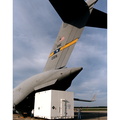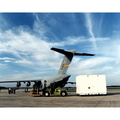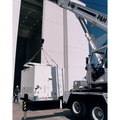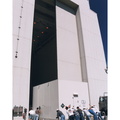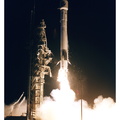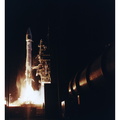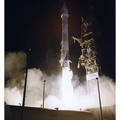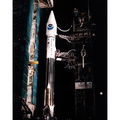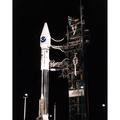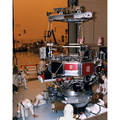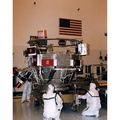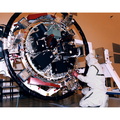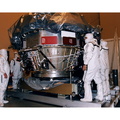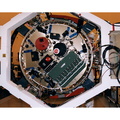
WIKIARCHIVES.SPACE
The Human Spaceflight Archive

Information
- Taken in
- Kennedy Space Center
- Autor
- NASA
- Descripció
- The GOES-K weather satellite lifts off from Launch Pad 36B at Cape Canaveral Air Station on an Atlas 1 rocket (AC-79) at 1:49 a.m. EDT April 25. The GOES-K is the third spacecraft to be launched in the new advanced series of geostationary weather satellites for the National Oceanic and Atmospheric Administration (NOAA). The GOES-K is built for NASA and NOAA by Space Systems/LORAL of Palo Alto, Calif. The advanced weather satellite was built and launched for NOAA under technical guidance and project management by NASA's Goddard Space Flight Center. Once it is in geosynchronous orbit at 22,240 miles above the Earth's equator at 105 degrees West Longitude and undergoes its final checkout, the GOES-K will be designated GOES-10. The primary objective of the GOES-K launch is to provide a full- capability satellite in an on-orbit storage condition to assure NOAA backup continuity in weather coverage of the Earth in case one of the existing two operational GOES satellites now in orbit begins to malfunction.
- Creada el
- Divendres 25 Abril 1997
- Àlbums
-
Locations / OSM-4.915832801313164
US SPACE PROGRAM / SATELLITES / ATLAS I / GOES-K / Meanwhile, on Earth
- Source link
- https://science.ksc.nasa.gov/gallery/photos/1997/
- Visites
- 48
- Puntuació
- sense valorar
- Valoreu aquesta foto
- License
- CC BY-NC-ND
- Modified by WikiArchives
- No (original)
- Descàrregues
- 0
Desenvolupat per Piwigo

